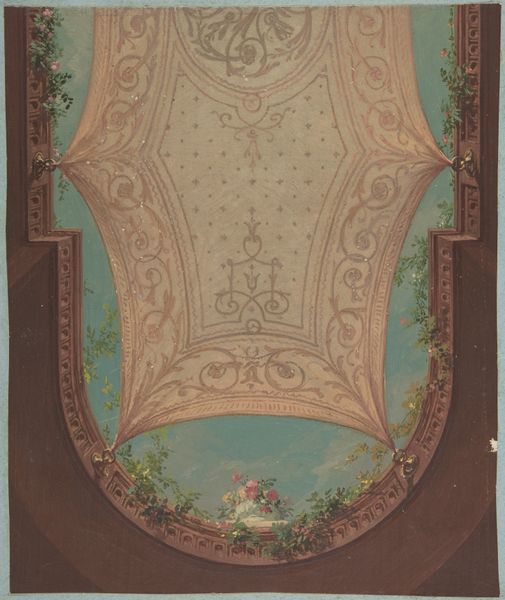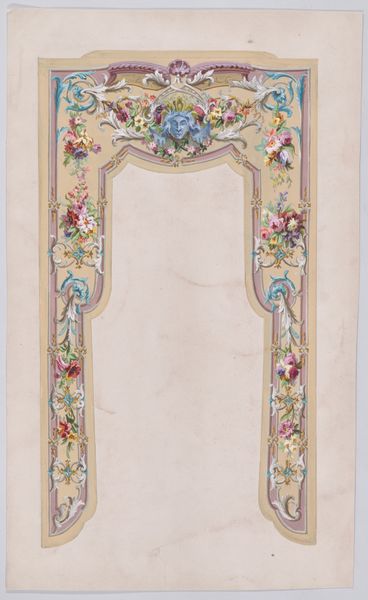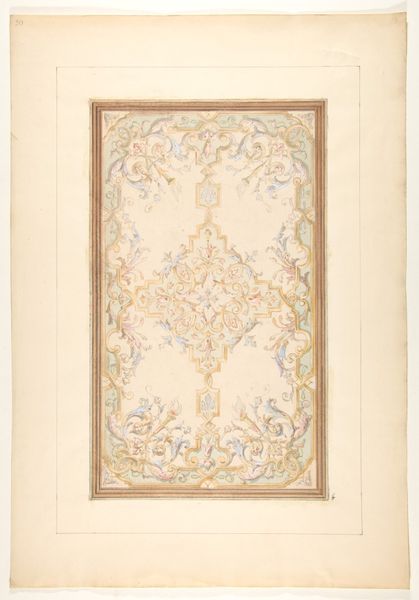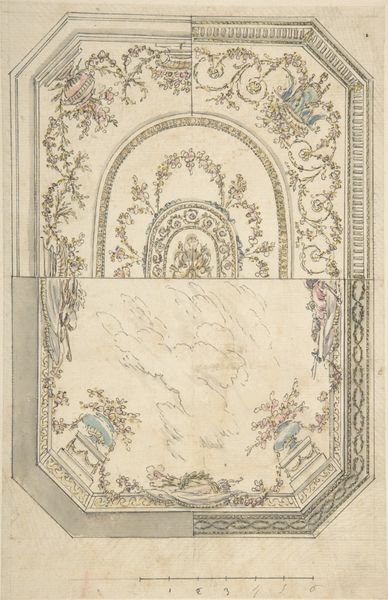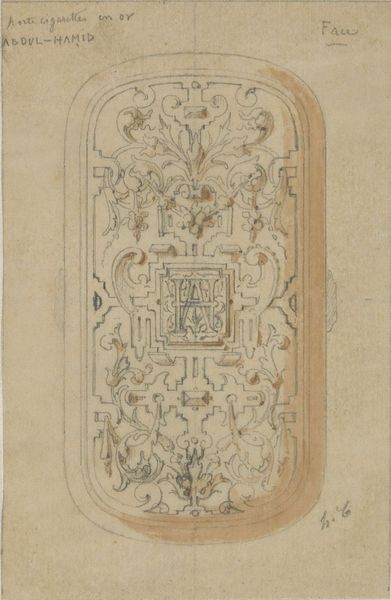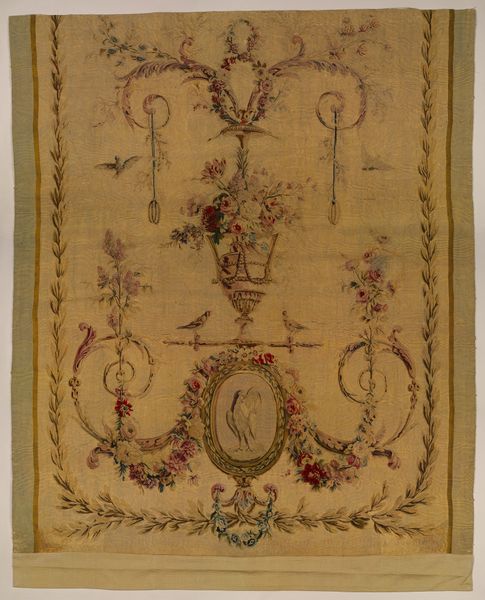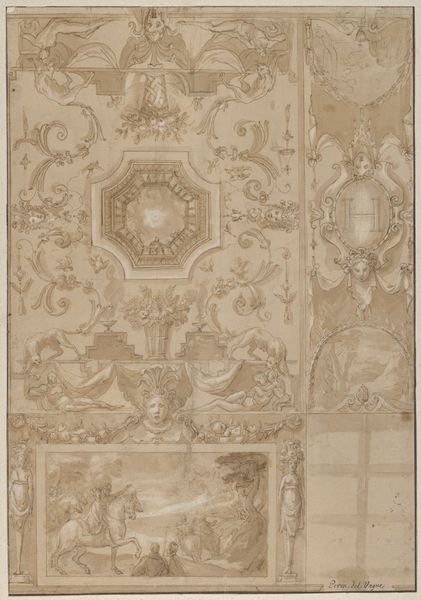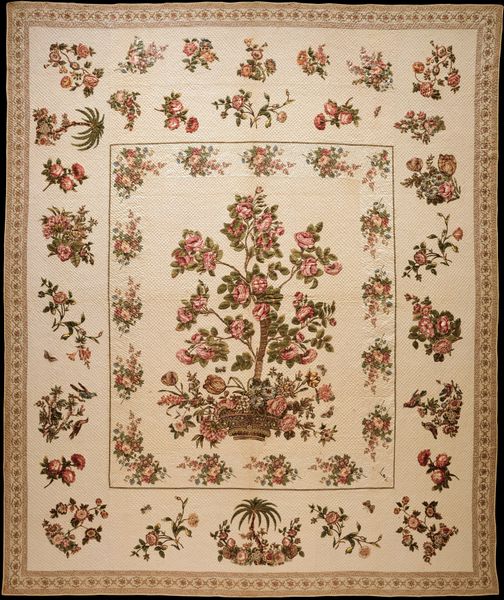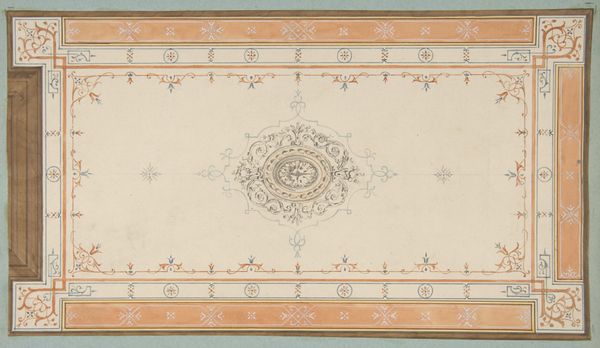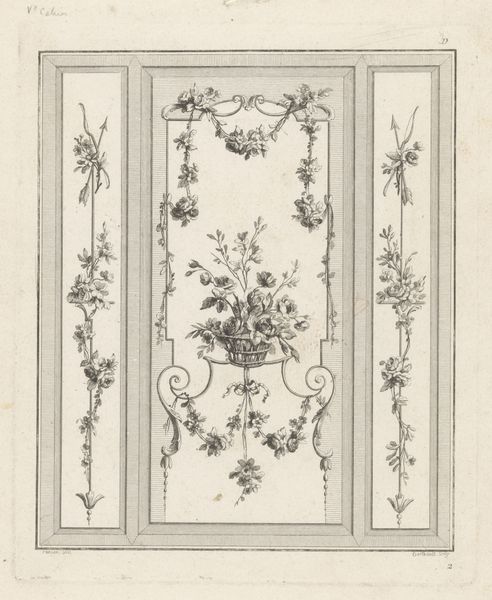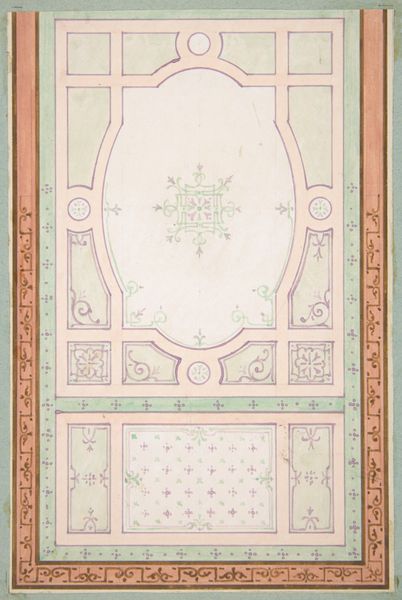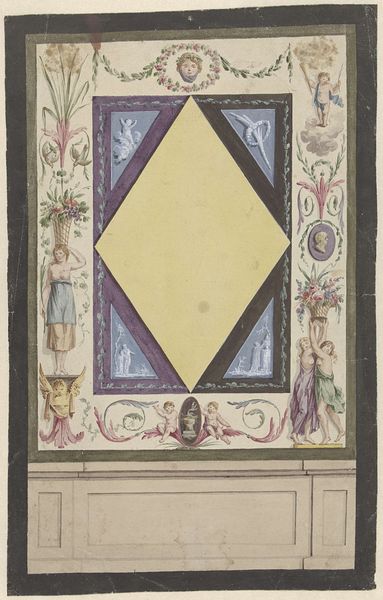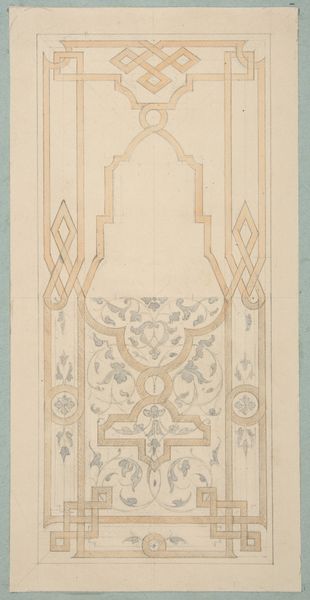
Design for Gallery Ceiling, Hôtel Cottier 1874 - 1884
0:00
0:00
Dimensions: 10 13/16 x 8 3/4 in. (27.4 x 22.2 cm)
Copyright: Public Domain
Curator: This watercolor and print design, “Design for Gallery Ceiling, Hôtel Cottier,” dating from 1874 to 1884, comes to us from Jules-Edmond-Charles Lachaise. Editor: It has such a light, airy quality. Almost feels like gazing upwards into a meticulously adorned tent. The colors are so soft, barely there. Curator: That softness is characteristic of Art Nouveau, a style known for its emphasis on decorative beauty. Look at the layers: we have drawing, watercolor washes, and a print matrix working together. We need to think about how Lachaise's labor contributed to creating this ornate design, ready for replication. This isn’t simply ‘high art’, it’s a commercially-minded, proto-industrial design. Editor: And whose gallery ceiling was it meant to adorn? I'm thinking about who occupied the space beneath it, what kind of societal narrative it amplified. Did this hotel, and by extension, the artwork itself, welcome women, people of color, working class? Were they given the same view? It invites questions of accessibility and representation. Curator: Indeed. This drawing would've dictated the application of paint or possibly even the placement of stained glass. Each leaf, each curve was part of a carefully orchestrated production process intended to create an opulent setting. Imagine the skilled tradespeople executing these designs. Were they recognized for their artistic labor, or were they mere functionaries? Editor: I'm thinking about the inherent contradictions – luxury versus labor, exclusivity versus the pervasive imagery it generates. And that gilded cage effect, the flowers—they amplify the theme. Consider, even, who Lachaise designed *for*, and from whose gaze and cultural bias the images arose. It’s also worth mentioning how decorative art and "feminine" designs were frequently dismissed by a patriarchal, eurocentric art establishment. Curator: Right, understanding this requires acknowledging the class dynamics at play. Art Nouveau as a movement both critiqued and perpetuated certain forms of capitalist production and consumption. Designs like these played a significant role in shaping Victorian society's understanding of luxury. Editor: I now feel compelled to view the ceilings of buildings wherever I go! It definitely leaves me pondering the subtle messaging embedded in seemingly benign designs. Curator: I agree; a deeper understanding of this design certainly requires a more nuanced understanding of production, class, labor, and materials in 19th century Europe.
Comments
No comments
Be the first to comment and join the conversation on the ultimate creative platform.
